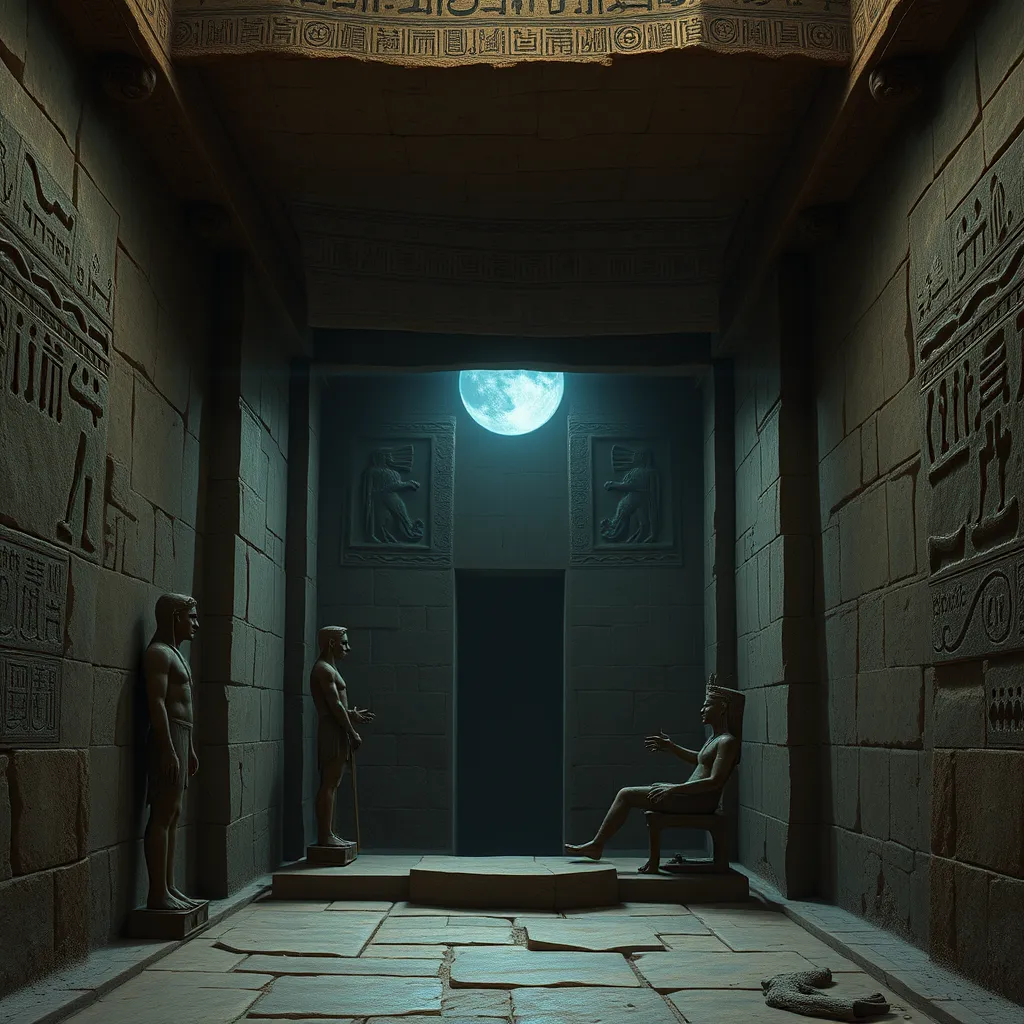The Duat: A Window into the Soul
I. Introduction
The Duat, often referred to as the ancient Egyptian underworld, is a complex and fascinating aspect of Egyptian mythology. It serves as a symbolic space where the soul journeys after death, playing a crucial role in the beliefs surrounding the afterlife.
In ancient Egyptian culture, the Duat was not merely a dark abyss but a realm filled with trials, deities, and transformative experiences. It reflects the Egyptians’ deep understanding of life, death, and rebirth, emphasizing the significance of the soul’s journey. This article aims to explore the Duat as a metaphorical window into the soul, revealing insights into human existence and our eternal quest for meaning.
II. Historical Context of the Duat
The concept of the Duat has its origins in ancient Egyptian culture, where it was initially conceived as a realm that existed below the earth, housing the dead and serving as a passageway to the afterlife.
Over time, beliefs about the Duat evolved, influenced by changing religious practices and philosophical thought. Key texts, such as the “Book of the Dead,” provide valuable insights into the nature of the Duat and its significance. Artifacts, including tomb inscriptions and paintings, also illustrate the ancient Egyptians’ views on the afterlife and the soul’s journey through the Duat.
III. The Structure of the Duat
The Duat is often depicted as a vast and intricate landscape, consisting of various realms and environments. Each area represents different stages of the soul’s journey, filled with challenges and obstacles that must be overcome.
- The Fields of Iaru: A paradise where souls who have passed the trials of the Duat reside.
- The Waters of Chaos: A turbulent sea that souls must navigate, representing the fears and uncertainties of death.
- The Hall of Two Truths: The site of judgment where the heart of the deceased is weighed against the feather of Ma’at.
Key deities associated with the Duat play vital roles in guiding and protecting souls during their journey. Notable figures include Osiris, the god of the afterlife, and Anubis, the god of mummification and the protector of the dead.
IV. Symbolism of the Duat
The Duat is rich in symbolism, representing transformation and rebirth. It serves as a metaphor for the challenges one faces in life and the potential for growth through adversity.
Within the Duat, the interplay of darkness and light holds significant meaning. Darkness symbolizes the unknown and the trials of the afterlife, while light represents knowledge, enlightenment, and the hope of rebirth. This duality reflects the human experience of navigating through life’s challenges toward personal growth and understanding.
Moreover, the Duat acts as a reflection of the human soul’s journey, emphasizing that death is not an end but a transition to another state of existence. It invites individuals to contemplate their lives and the legacy they will leave behind.
V. The Soul and Its Journey in the Duat
In ancient Egyptian spirituality, the soul is comprised of several components, primarily the ka and ba. The ka represents the life force, while the ba signifies the personality and individuality of a person. The journey through the Duat encompasses the reunification of these components after death.
A pivotal moment in the soul’s journey is the weighing of the heart, a judgment process conducted by Osiris and the goddess Ma’at. The deceased’s heart is weighed against the feather of truth, symbolizing their deeds during life:
- If the heart is lighter than the feather, the soul is deemed virtuous and granted passage to the Fields of Iaru.
- If the heart is heavier, it is devoured by Ammit, a fearsome creature, signifying the soul’s failure to achieve a righteous life.
The ultimate goals of the soul’s journey through the Duat are to attain eternal life and reunite with the divine. This journey is not merely a passage after death but a profound exploration of one’s life choices and spiritual growth.
VI. The Duat in Art and Literature
The Duat has been depicted extensively in ancient Egyptian art, particularly in tomb paintings and inscriptions. These artworks served both decorative and didactic purposes, illustrating the journey through the Duat and the importance of the afterlife.
Literary representations of the Duat can be found in various texts, including the “Book of the Dead,” which provides instructions for navigating the afterlife and highlights the significance of moral conduct in life.
The influence of the Duat extends beyond ancient Egypt, inspiring later spiritual and metaphysical thought. Its themes of transformation and judgment resonate with various cultures and philosophies, emphasizing the universal nature of the soul’s journey.
VII. Modern Interpretations of the Duat
The Duat continues to influence contemporary spiritual practices, with many seeking to understand its lessons in personal development and self-discovery. It serves as a metaphor for the inner journey each individual undergoes, encouraging introspection and growth.
In psychology, the Duat can be seen as a representation of the subconscious mind, where individuals confront their fears and challenges to achieve personal insight and transformation.
Discussions about life, death, and the afterlife today often draw on the themes presented by the Duat, highlighting its relevance in understanding the human experience and our eternal quest for meaning.
VIII. Conclusion
In summary, the Duat serves as a significant window into the soul, offering profound insights into the nature of life, death, and rebirth. It reflects the ancient Egyptians’ understanding of the human experience and emphasizes the importance of moral choices and personal growth.
Modern individuals can learn valuable lessons from the Duat, including the significance of self-reflection and the transformative power of facing challenges. As we navigate our own journeys, the legacy of the Duat remains a timeless reminder of the interconnectedness of life, death, and the eternal quest for understanding.




